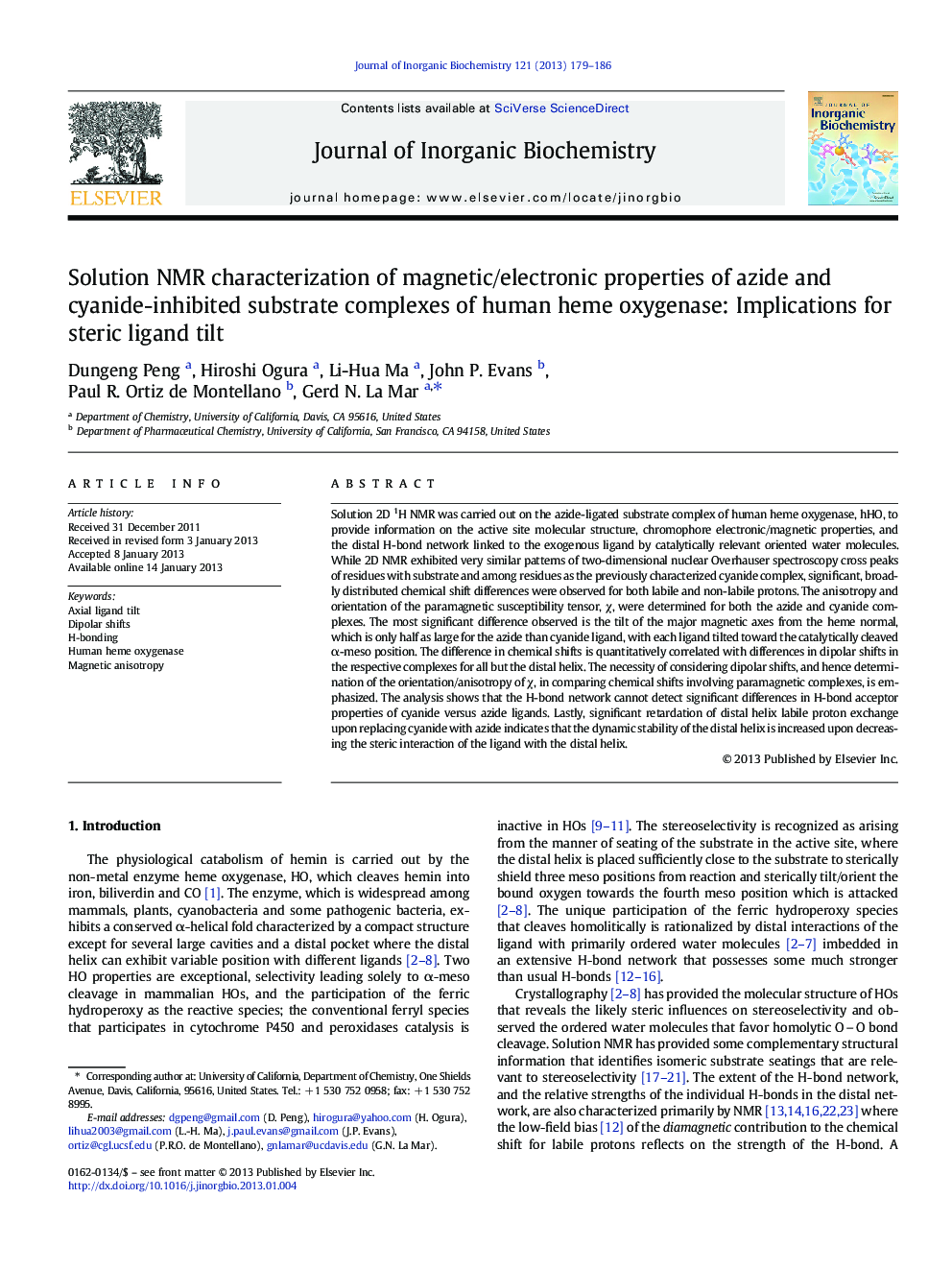| کد مقاله | کد نشریه | سال انتشار | مقاله انگلیسی | نسخه تمام متن |
|---|---|---|---|---|
| 1316057 | 1499466 | 2013 | 8 صفحه PDF | دانلود رایگان |

Solution 2D 1H NMR was carried out on the azide-ligated substrate complex of human heme oxygenase, hHO, to provide information on the active site molecular structure, chromophore electronic/magnetic properties, and the distal H-bond network linked to the exogenous ligand by catalytically relevant oriented water molecules. While 2D NMR exhibited very similar patterns of two-dimensional nuclear Overhauser spectroscopy cross peaks of residues with substrate and among residues as the previously characterized cyanide complex, significant, broadly distributed chemical shift differences were observed for both labile and non-labile protons. The anisotropy and orientation of the paramagnetic susceptibility tensor, χ, were determined for both the azide and cyanide complexes. The most significant difference observed is the tilt of the major magnetic axes from the heme normal, which is only half as large for the azide than cyanide ligand, with each ligand tilted toward the catalytically cleaved α-meso position. The difference in chemical shifts is quantitatively correlated with differences in dipolar shifts in the respective complexes for all but the distal helix. The necessity of considering dipolar shifts, and hence determination of the orientation/anisotropy of χ, in comparing chemical shifts involving paramagnetic complexes, is emphasized. The analysis shows that the H-bond network cannot detect significant differences in H-bond acceptor properties of cyanide versus azide ligands. Lastly, significant retardation of distal helix labile proton exchange upon replacing cyanide with azide indicates that the dynamic stability of the distal helix is increased upon decreasing the steric interaction of the ligand with the distal helix.
The degree of steric tilt for axial ligand correlates with the degree of tilt of the major magnetic axis of χ.Figure optionsDownload as PowerPoint slideHighlights
► Tilt of the major magnetic axis of χ correlates with the steric tilt of axial ligand.
► Tilt of the linear cyanide ligand is twice that of the bent azide ligand.
► Large chemical shift difference with ligand correlates with dipolar shift differences.
► Differences in H-bond acceptor strength of azide and cyanide are undetectable.
Journal: Journal of Inorganic Biochemistry - Volume 121, April 2013, Pages 179–186